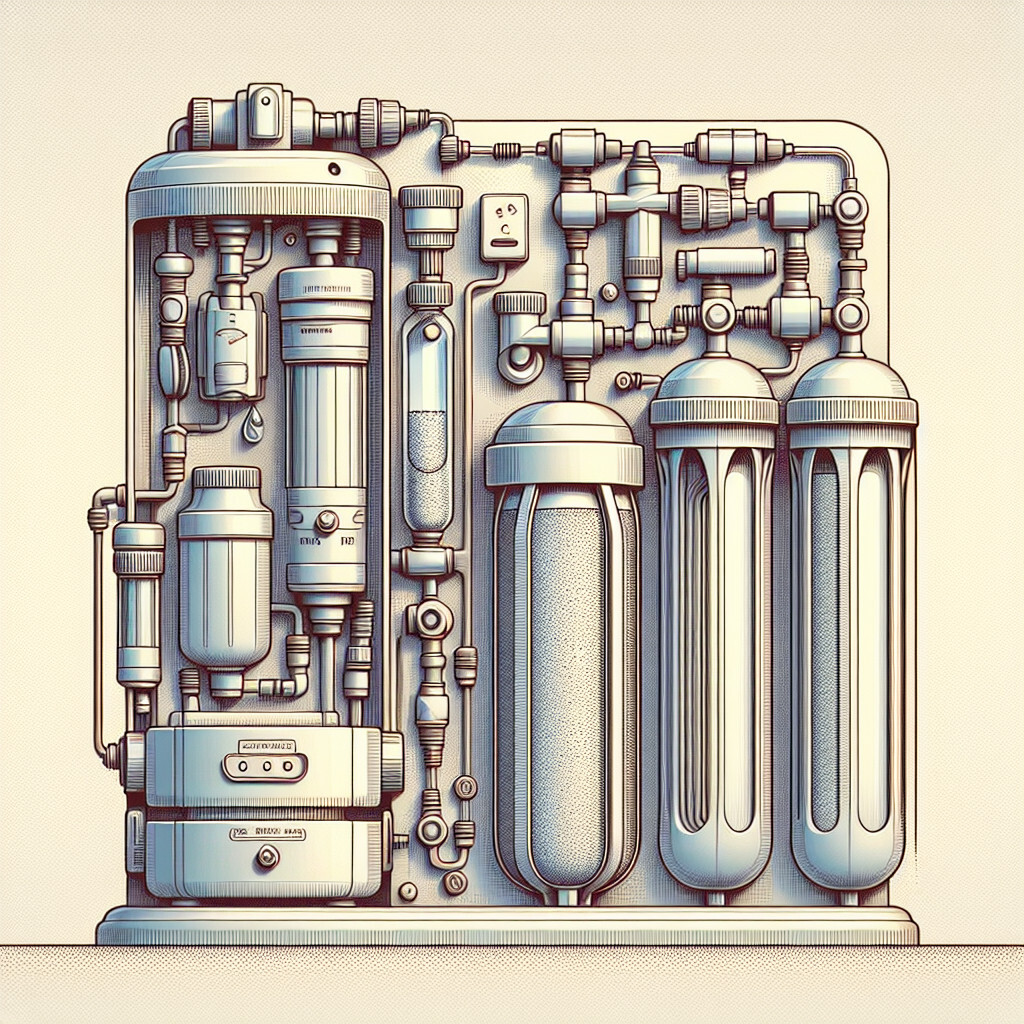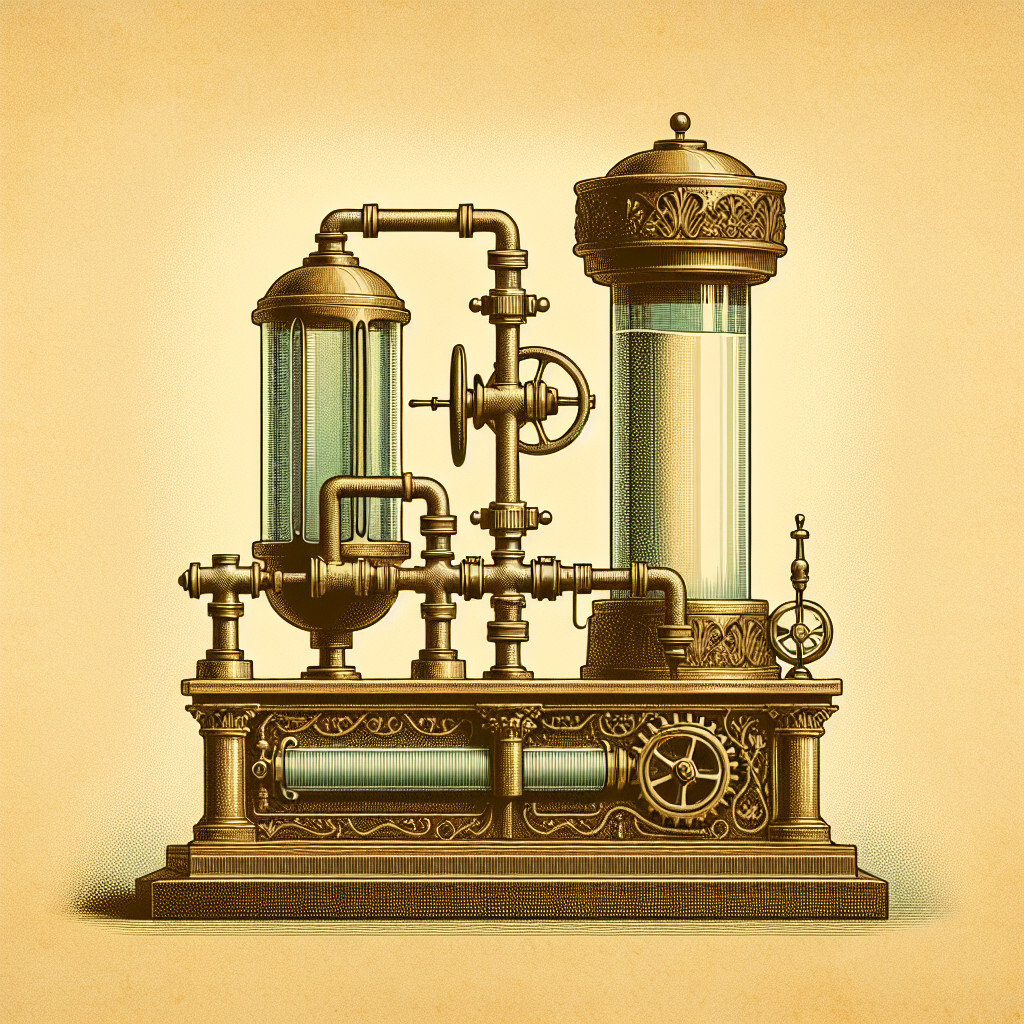-
Table of Contents
“Pure Refreshment, Straight from Your Tap!”
Introduction

A water filtration system for tap water is a crucial mechanism designed to remove impurities, contaminants, and harmful substances from tap water. This system works by passing the water through one or more filters that trap the unwanted particles. The types of impurities these systems can remove include bacteria, algae, viruses, fungi, minerals, and man-made pollutants. The result is cleaner, safer, and often better-tasting water. Water filtration systems for tap water come in various types, including activated carbon filters, reverse osmosis systems, and UV filters, each offering different levels of filtration. They are essential for ensuring the health and safety of those consuming the water.
Understanding the Importance of a Water Filtration System for Tap Water
Understanding the importance of a water filtration system for tap water is crucial in today’s world where water pollution is a growing concern. Despite the efforts of municipal water treatment facilities, tap water can still contain various contaminants that can pose health risks. A water filtration system can significantly reduce these risks by removing harmful substances from your tap water, making it safer and healthier to drink.
Water filtration systems work by passing tap water through a series of filters that trap and remove contaminants. These systems can effectively eliminate a wide range of pollutants, including heavy metals like lead and mercury, bacteria, viruses, and chemical compounds such as chlorine and pesticides. Moreover, they can also remove unpleasant tastes and odors, providing you with cleaner, fresher tasting water.
One of the primary reasons to consider a water filtration system for tap water is the potential health benefits. Consuming contaminated water can lead to a variety of health issues, from minor gastrointestinal problems to serious conditions like lead poisoning and cancer. By removing these contaminants, a water filtration system can help protect you and your family’s health.
Furthermore, a water filtration system can be a more cost-effective and environmentally friendly solution compared to bottled water. While bottled water is often marketed as a safer alternative to tap water, it can be expensive in the long run and contributes to plastic waste. On the other hand, a water filtration system requires an initial investment, but it can save you money over time as you won’t need to constantly buy bottled water. Plus, it reduces your environmental footprint by cutting down on plastic waste.
Another advantage of a water filtration system is its convenience. With a filtration system installed directly to your tap, you have access to clean, filtered water whenever you need it. This is particularly beneficial for cooking, as it ensures that the water you use in your food is free from harmful contaminants.
However, it’s important to note that not all water filtration systems are created equal. Different systems use different filtration methods and can vary in their effectiveness at removing certain contaminants. Therefore, it’s essential to do your research and choose a system that suits your specific needs. For instance, if your tap water contains high levels of a particular contaminant, you should look for a system that is effective at removing that specific substance.
In conclusion, a water filtration system for tap water is a valuable investment for your health, wallet, and the environment. It provides a reliable solution to the problem of water contamination, ensuring that the water you drink and use in your home is as clean and safe as possible. By understanding the importance of a water filtration system, you can make an informed decision that benefits not only you and your family but also contributes to the broader effort of preserving our planet.
The Top Water Filtration Systems for Tap Water: A Comprehensive Review
Water is a fundamental necessity for life, and its quality directly impacts our health and wellbeing. However, the tap water that flows into our homes may not always be as clean and safe as we would like. It can contain various contaminants, including heavy metals, bacteria, and other harmful substances. This is where a water filtration system for tap water comes into play. These systems are designed to remove impurities and provide us with clean, safe drinking water. This article provides a comprehensive review of the top water filtration systems for tap water.
One of the most popular and effective water filtration systems is the reverse osmosis system. This system works by forcing water through a semi-permeable membrane, which filters out contaminants. The result is pure, clean water that is free from harmful substances. Reverse osmosis systems are known for their ability to remove a wide range of contaminants, including lead, chlorine, and fluoride. However, they also remove beneficial minerals from the water, which some people may find undesirable.
Another top-rated water filtration system is the activated carbon filter. This system uses activated carbon to remove contaminants from water. The activated carbon attracts and traps impurities, effectively removing them from the water. Activated carbon filters are particularly effective at removing chlorine, which can affect the taste and smell of tap water. However, they are not as effective at removing other contaminants, such as heavy metals or bacteria.
For those looking for a more comprehensive solution, a multi-stage water filtration system may be the best option. These systems combine several different types of filters to remove a wide range of contaminants. For example, a multi-stage system might include a sediment filter to remove large particles, an activated carbon filter to remove chlorine and improve taste, and a reverse osmosis filter to remove other contaminants. Multi-stage systems are generally more expensive than single-stage systems, but they provide a higher level of filtration.
Ultraviolet (UV) water filtration systems are another excellent option for ensuring safe drinking water. These systems use UV light to kill bacteria and other microorganisms in the water. UV systems are highly effective at disinfecting water, but they do not remove other types of contaminants, such as heavy metals or chemicals. Therefore, they are often used in conjunction with other types of filters.
Lastly, there are also faucet-mounted filters, which are easy to install and relatively inexpensive. These filters attach directly to the faucet and filter water as it flows out. Faucet-mounted filters can be effective at removing many types of contaminants, but they have a limited capacity and need to be replaced regularly.
In conclusion, there are many different types of water filtration systems available, each with its own strengths and weaknesses. The best system for you will depend on your specific needs and concerns. Whether you choose a reverse osmosis system, an activated carbon filter, a multi-stage system, a UV system, or a faucet-mounted filter, investing in a water filtration system is a wise decision that can significantly improve the quality of your tap water.
How to Install a Water Filtration System for Your Tap Water
Water filtration systems for tap water have become increasingly popular in recent years due to their ability to remove harmful contaminants and improve the taste and odor of tap water. Installing a water filtration system in your home can be a straightforward process if you follow the correct steps and have the right tools at hand.
Before you begin the installation process, it’s important to first understand the type of water filtration system you have purchased. There are several types of systems available on the market, including activated carbon filters, reverse osmosis systems, and ultraviolet disinfection systems, each with its own unique installation process. Therefore, it’s crucial to read the manufacturer’s instructions carefully.
Once you have familiarized yourself with the type of system you have, the next step is to gather the necessary tools. Typically, you will need an adjustable wrench, a drill, a screwdriver, and plumber’s tape. It’s also advisable to have a bucket and towels on hand to catch any water that may spill during the installation process.
The first step in the installation process is to turn off the cold water supply. This is usually done by turning the valve under the sink clockwise until it stops. Next, you will need to remove the existing faucet aerator, which is the part of the faucet where the water comes out. This can usually be unscrewed by hand, but if it’s too tight, you can use a wrench.
Once the aerator is removed, you can install the diverter valve. This is the part of the water filtration system that allows you to switch between filtered and unfiltered water. The diverter valve should be screwed onto the faucet where the aerator was previously attached. Be sure to use plumber’s tape on the threads of the faucet to ensure a tight seal.
After the diverter valve is securely in place, you can connect the tubing that will carry the water from the diverter valve to the filter. This is usually done by pushing the tubing onto the barbed fitting on the diverter valve and securing it with a clamp. The other end of the tubing should be connected to the inlet port on the filter.
The final step in the installation process is to mount the filter. Depending on the type of system you have, the filter may be mounted under the sink or on the countertop. If the filter is to be mounted under the sink, you will need to drill holes in the cabinet for the mounting screws. If the filter is to be mounted on the countertop, it can usually be placed in a convenient location near the faucet.
Once the filter is mounted and all connections are secure, you can turn the cold water supply back on and check for leaks. If there are no leaks, you can run the water through the system for a few minutes to flush out any carbon fines that may be present in the filter.
In conclusion, installing a water filtration system for your tap water can be a relatively simple process if you follow the manufacturer’s instructions and have the necessary tools. Not only will this provide you with cleaner, better-tasting water, but it can also give you peace of mind knowing that you are protecting your family from potentially harmful contaminants.
The Health Benefits of Using a Water Filtration System for Tap Water
Water is an essential component of life, and its quality directly impacts our health and wellbeing. In many parts of the world, tap water is the primary source of drinking water. However, it often contains impurities and contaminants that can pose serious health risks. This is where a water filtration system for tap water comes into play. It is a practical and effective solution to ensure the water we consume is clean, safe, and healthy.
Water filtration systems work by removing harmful substances from tap water. These substances can include bacteria, viruses, heavy metals, and chemical pollutants. The filtration process involves passing the water through a series of filters that trap and remove these contaminants. The result is water that is not only cleaner but also tastes better and is more beneficial to our health.
One of the most significant health benefits of using a water filtration system for tap water is the reduction of harmful bacteria and viruses. These microorganisms can cause a variety of illnesses, including gastrointestinal disorders and serious diseases like cholera and typhoid. By removing these pathogens, water filtration systems can help prevent these health problems and protect our immune system.
Moreover, water filtration systems can also remove heavy metals from tap water. These include lead, mercury, and arsenic, which can accumulate in the body over time and cause a range of health issues. For instance, lead exposure can lead to neurological problems, while arsenic can cause skin, lung, and bladder cancer. By filtering out these heavy metals, water filtration systems can significantly reduce these health risks.
Chemical pollutants are another concern with tap water. These can come from a variety of sources, including industrial waste, agricultural runoff, and household cleaning products. Long-term exposure to these chemicals can lead to a host of health problems, including hormonal imbalances, reproductive issues, and an increased risk of cancer. Water filtration systems can effectively remove these chemical pollutants, providing us with safer and healthier water.
In addition to these health benefits, water filtration systems can also improve the taste and odor of tap water. This is because they remove substances like chlorine, which is often used to disinfect tap water but can give it an unpleasant taste and smell. By removing these substances, water filtration systems can make tap water more enjoyable to drink, which can encourage us to stay hydrated and support our overall health.
Furthermore, using a water filtration system for tap water can also have economic benefits. While there is an initial cost to purchase and install the system, it can save money in the long run by reducing the need to buy bottled water. This is not only good for our wallets but also for the environment, as it reduces plastic waste.
In conclusion, using a water filtration system for tap water offers numerous health benefits. It can protect us from harmful bacteria, viruses, heavy metals, and chemical pollutants, improve the taste and odor of our water, and even save us money. Therefore, investing in a water filtration system is a wise decision for anyone who values their health and wellbeing.
Q&A
1. Question: What is a water filtration system for tap water?
Answer: A water filtration system for tap water is a device or system that removes impurities and contaminants from tap water, making it safe and clean for consumption. It can include various types of filters such as activated carbon, ceramic, reverse osmosis, or ultraviolet filters.
2. Question: How does a water filtration system work?
Answer: A water filtration system works by passing tap water through a series of filters that trap and remove contaminants. The water may first pass through a mechanical filter to remove large particles, then an activated carbon filter to remove organic contaminants, and finally a reverse osmosis filter to remove smaller particles and heavy metals.
3. Question: Why is it important to have a water filtration system for tap water?
Answer: It’s important to have a water filtration system for tap water because it ensures the water you consume is free from harmful substances like bacteria, viruses, heavy metals, and chemical pollutants. This can protect your health and improve the taste and odor of your water.
4. Question: What are the different types of water filtration systems available?
Answer: There are several types of water filtration systems available including activated carbon filters, reverse osmosis systems, ultraviolet disinfection systems, and distillation units. Each type has its own strengths and weaknesses, and the best choice depends on the specific contaminants present in your tap water.
Conclusion
In conclusion, a water filtration system for tap water is a crucial tool for enhancing water safety and quality. It effectively removes harmful contaminants, improves the taste and smell of water, and provides a cost-effective and environmentally friendly solution for accessing clean drinking water. However, regular maintenance and filter replacements are necessary to ensure its optimal performance.






